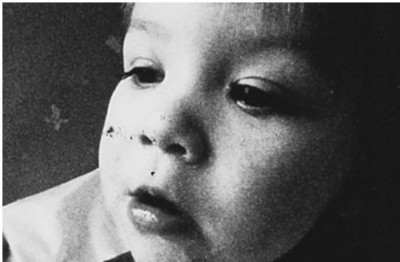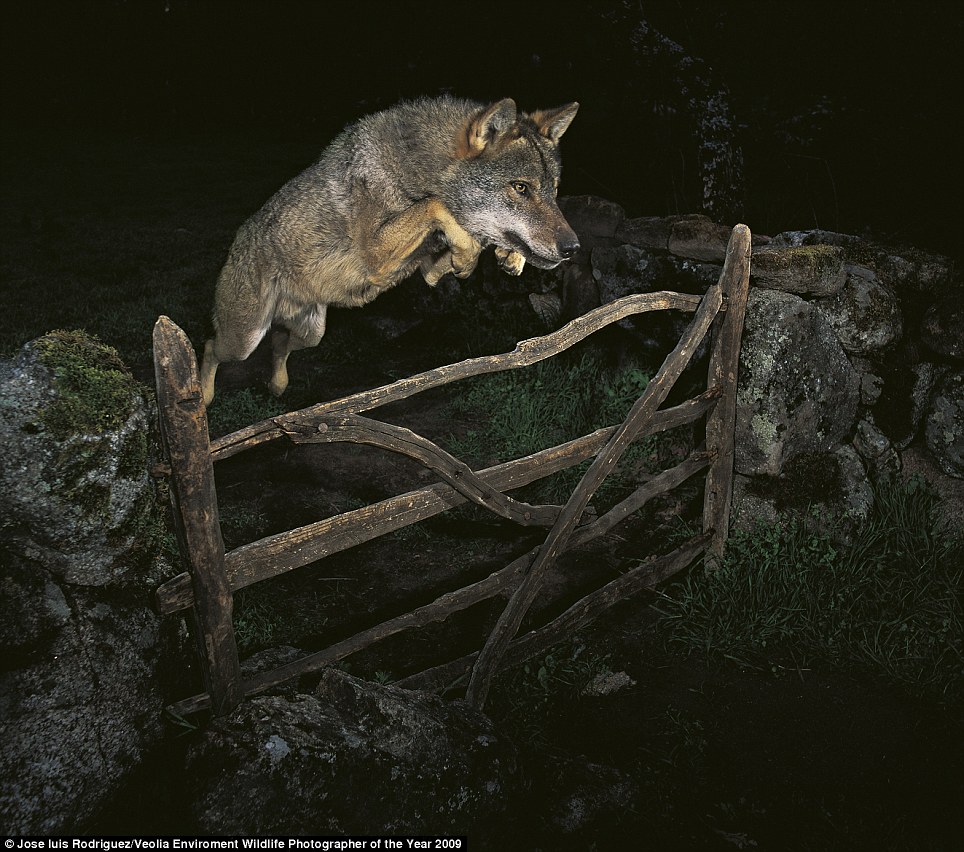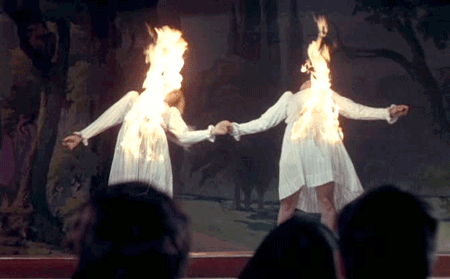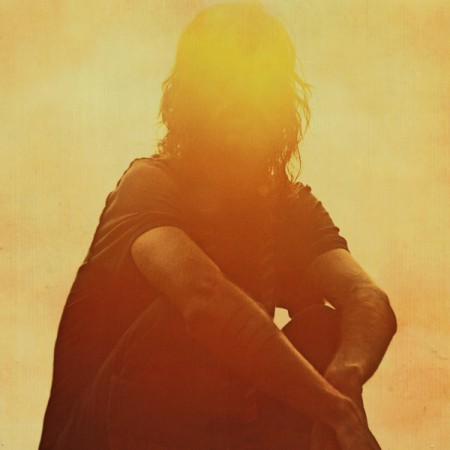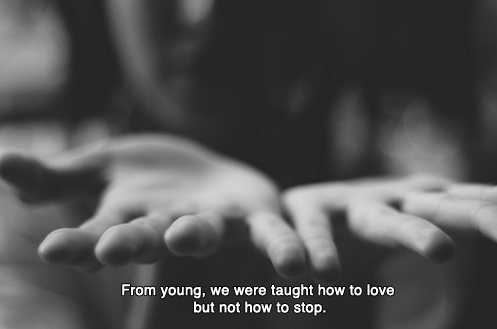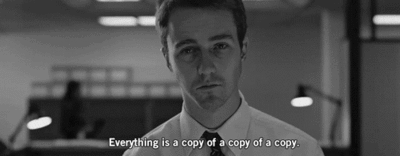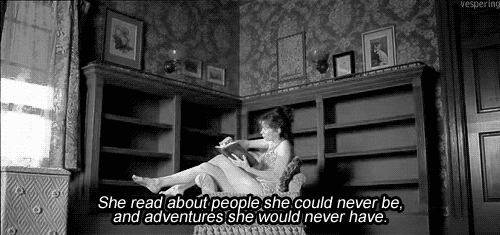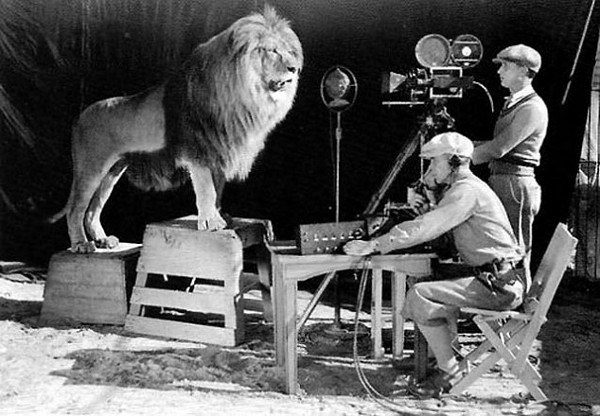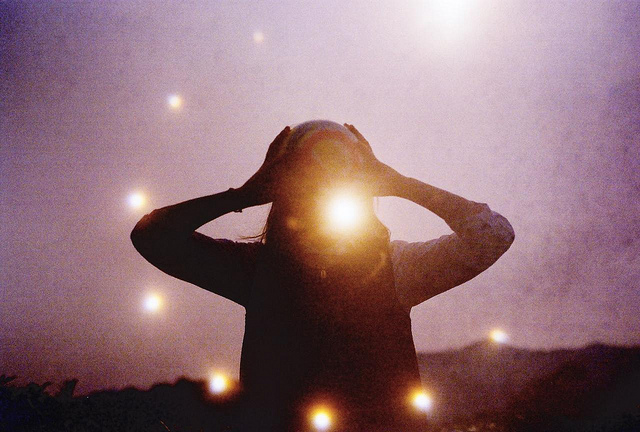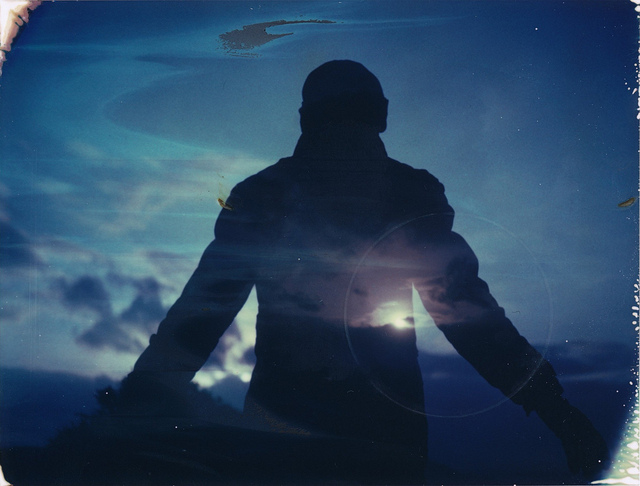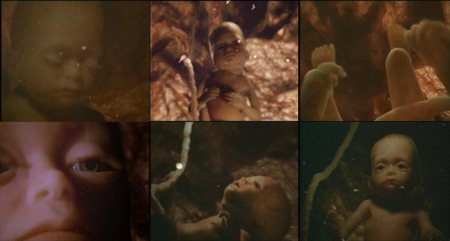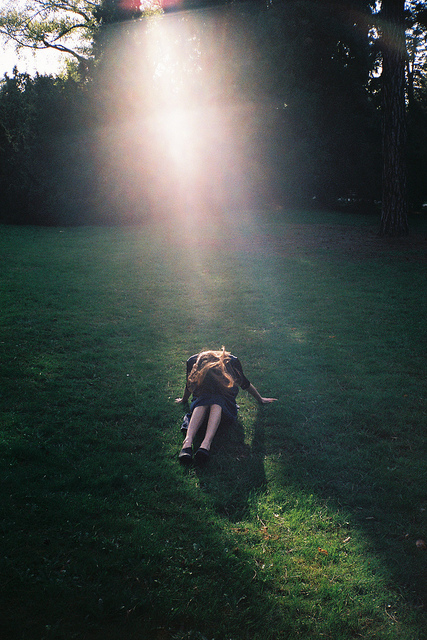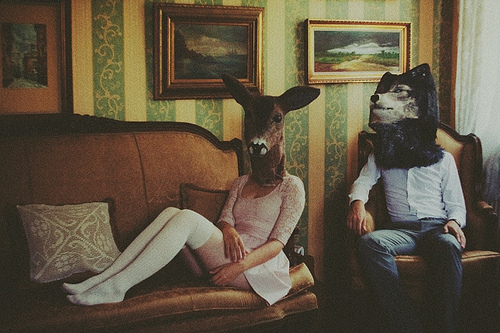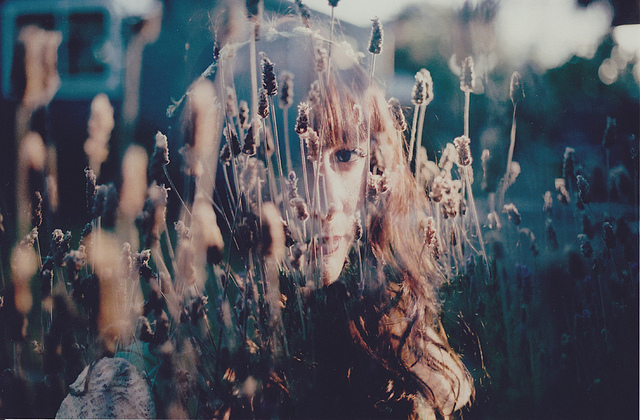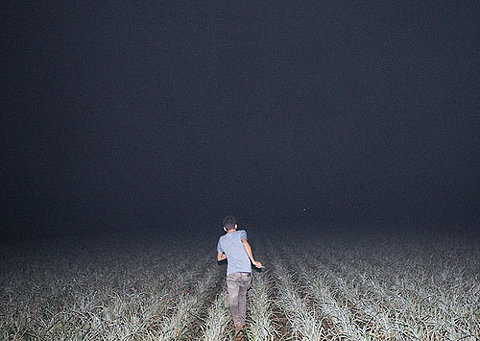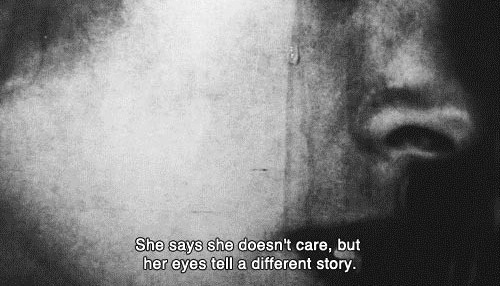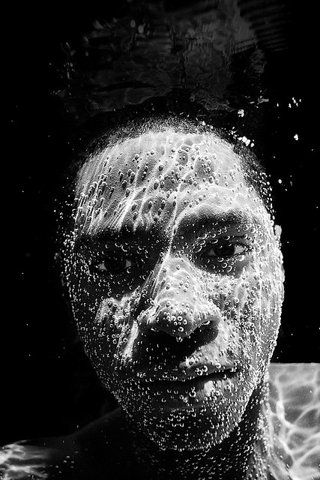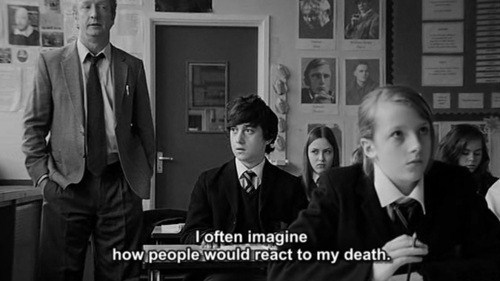Imitations of Life 75 minutes, video, 2003
“Mike Hoolboom’s restlessly intelligent film is broken up into ten parts, each revolving around issues of representation, eventually narrowing into a sort of treatise on the Hollywood dream factory and its impact on how we imagine the future. Working in a transcendental style not entirely dissimilar to Chris Marker’s, Hoolboom reconfigures a wide array of found footage into a consistently compelling meta-movie which demands and rewards rapt attention.” Adam Nayman, Eye Weekly
Imitations strains childhood through a history of reproduction, culling pictures from the Lumiéres to the present day in order to find the future in our past. A video in nine parts: In the Future (3 min), Jack (15 min), Last Thoughts (7 min), Portrait (4 min), Secret (2 min), In My Car (5 min), The Game (5.5 min), Scaling (5 min), Imitation of Life (21 min).
“It may indeed be questioned whether we have any memories at all from our childhood: memories relating to our childhood may be all that we possess. Our childhood memories show us our earliest years not as they were, but as they appeared at the later periods when the memories were aroused. In these periods of arousal, the childhood memories did not, as people are accustomed to say, emerge; they were formed at that time. And a number of motives, with no concern for historical accuracy, had a part in forming them, as well as in the selection of the memories themselves.” Freud
“Major essay filmmaking from Canada’s Hoolboom, quite the equal to fellow Canadian Peter Mettler in the depth and range of his poetic, personal and philosophical mixed-media enquiries. An ambient assembly of diverse footages, from ads to classic clips, home movies to video diaries. Imitations explores the compulsion to document reality and the fissure between image and experience. Following the early childhood of his nephew Jack, Hoolboom delivers a profound, elegiac but often wryly humorous enquiry into the role of representation in the contemporary mindset. The presiding tone might be Markersque but the voice is Hoolboom’s own, melancholy, moving and committed. It all adds up to a poetic, persuasive evaluation of the disquieting new world we are making, and the attendant disappearances along that road.” Time Out, London
“Mike Hoolboom’s latest work is an extraordinary palimpsest in action. It is packed with cinema images that interpenetrate, fertilize and repel one another. Taken from Hollywood fiction films but also from newsreels and documentary and scientific works, all these images patiently collected against the background of a salutary hold-up (the scenes are excised without any particular precaution from the gigantic body of cinema films, and by extension from the myths that they convey) have something of the construction of a metafilm. This is both a situationist commentary, through the playful and iconoclastic way in which the works concerned are diverted, and at the same time a Sisyphean attempt to get another story to emerge from this magma of images. In ten chapters Hoolboom gives consistency to nightmare-filled sleep and to waking dreams, with which he constructs a political and poetic reflection. Political in that he brands cinema as a colonial weapon, which even today-at least partially-tends to impose an imperialist vision of the world. The documentary shot of two white women throwing a few bread crumbs to some poor people is quite terrifying from this point of view. His film is poetic in its development of associations via editing. The film is organized into periods of harmony and hiatus, where light and darkness, body and decors, draws the arabesques of an incomplete narrative. When Mike Hoolboom himself gets hold of a camera, it’s above all to film Jack, his sister’s little boy, for whom he shows concerned affection.
In an intimate mode, voice-overs express doubts about the history of human beings and their expectations as they face the future. The pieces of music have a very elaborate density. They work at the heart of time, the passing of which they strive to disrupt and the buried dimensions of which they strive to bring out. The passing of time is modeled by images of the world in which Mike Hoolboom’s archaic fears and dreams reside. But it ends with a gag-the filmmaker’s elegant way of not giving in to melancholy.” Jean Perret, Visions du Réel Festival
“Director Mike Hoolboom’s archival snippets appear like fevered memories, and that’s the point. In our warped, media-happy world, filmed images-from Hollywood’s to simple home movies-take the place of our real memory. Life becomes a series of indirect, pretend experiences. Your eyes will strain to take in thousands of seductive fragments from big-screen footage (from old Leni Riefenstahl propaganda to Terminator 2) adeptly edited with Hoolboom’s own loving, sepia records of his nephew growing up. Likewise, your brain will work hard to absorb Hoolboom’s contemplative, poetic and sometimes wryly political musings on the meaning of life and the uncertain future. In all, it’s worth the effort, as this stunning, expressionistic delirium overwhelms with both sights and insights.” Janet Smith, Georgia Straight
“Mike Hoolboom is without doubt one of Canada’s film treasures-even if most people don’t know him from Adam. Committed to making experimental movies in an age where most prefer slick and mindless entertainments, Hoolboom has carved a unique and respected niche for himself. With Imitations of Life, Hoolboom takes on nothing less than the moving image and its personal relevance as it compares, in an abstract way, real life to the projected photographic self. Comprised of hundreds of clips from other movies, Hoolboom has created an emotional palimpsest of the human spirit that is enlightening on several fronts at once-from our collective dreams, to our apathy of imagination.” Katherine Monk, Vancouver Sun
“A series of topical new headlines sound like it might as well be the end of the world, but this is 1993, the year the filmmaker’s nephew Jack was born. It’s an event that leads him to contemplate the ceaseless urge to photograph and be photographed. For Hoolboom, this compulsion indicates our discontent with the world, which is compensated by reproducing it as ‘experience in a crisis-proof form.’ Imitations of Life is a 10-part suite of dreams and memories that integrates images from commercials, cinema classics and recent blockbusters. In Jack’s early years, the filmmaker sees (and shows us) the world through a child’s eyes. Later, this sense of open wonder is retained, though tempered in the knowledge that modern life doesn’t permit us such indulgence. We are “the children of Fritz Lang and Microsoft,” striving to give our lives shape and meaning through photographs, TV and movies. Through a vast wealth of adopted images, this video questions the values of lives lived through the lens. If movies carry our collective baggage and teach us about the world around us, do they hold us back from inventing the future?” Mark Webber, London International Festival Catalogue
“Expanding on the structure of Panic Bodies with its discrete but interconnected shorts, the latest found-footage feature from Mike Hoolboom is a ten-part meditation on childhood, visual representation and the future in a world of pictures. Breathtaking in its encyclopedic recycling and appropriation, the film moves beyond scratch video, assemblage and recontextualization; in Hoolboom’s words it “strains childhood through a history of reproduction, culling pictures from the Lumieres to the present day in order to find the future in the past.” Much more than just a poetic essay on mediation and simulation at the end of history, the film situates the ethical challenges of the future within the context of picture making, pointing to our current crisis as one of a failure of imagination, representation and technology.
Already acclaimed as a short in its own right, Jack works as the heart of the film, with Hoolboom’s familiar, wryly wise voice-over recounting visits with his nephew as we witness Jack growing up in processed Bolex images. Here we see possibility, for Jack makes happiness his profession and ponders if politics could ever be an expression of love. Throughout the film, the presence of childhood, whether in pictures, voice, story or reflection forces us adults to rethink our responsibility, imagination, apocalyptic terrors and the formation of our own memories. The title section itself proposes science fiction as a species of film haunted by science, obsessed with death and always about catastrophe. With visuals weaving together Riefenstahl, Terminator and many more familiar images, it leave us with the challenge of how we will invent the future.” Ken Anderlini, Vancouver Festival Catalogue
“Not only is this young man one of the most prominent Canadian experimental filmmakers, he is also a constant of the festival scene. His films are highly personal essays on life, cinema and the world, mingling analytical intelligence with visual poetry in the most beautiful way. His new work Imitations of Life is an excursion loaded with visual associations, from Hollywood to the filmmaker’s own childhood, from a possible future to the presence of the past, from appropriated images to images of his own—raising the question whether found footage has not been successfully transformed into one’s own footage through the process of memory already.” City Lights, Berlin
“What is most difficult to uphold is the appropriation and/or depropriation that is not respectful, that takes something without asking and uses or changes it. A conventional ethical view would argue that such appropriation is wrong and that it shows a lack of respect for propriety and for a history which would establish the rights of certain people to exclusive or privileged use of something. But it is precisely this kind of appropriation that is prevalent today, and it is also a kind of appropriation that on occasion has the most fortuitous results. Such an appropriation does not obey laws of ‘cultural exchange,’ and it is usually asymmetrical. But this doesn’t mean it’s used solely by the privileged or powerful on the marginalized and powerless, since it’s also employed by the marginalized and powerless. In the formulation of Michael Hardt and Antonio Negri, global capital, in its contemporary form of empire, appropriates the wealth of the commons through legal protocols such as patent and copyright registry, by which it establishes ownership. The goal of the multitude – those who are poor because they are denied access to material wealth and the realm of the immaterial that includes ideas, identities – is to reappropriate that wealth.” In Praise of Copying by Marcus Boon
“In his films, Mike Hoolboom is working on the construction and deconstruction of memory: Imitations of Life, his essay film in ten parts, is an inspiring combination of fragments of fictitious and authentic (auto)biographies, of found footage, home movies and a lyrical voice over. The video in ten parts is trying to find a future in the past by revisting childhood memories as proposed by Sigmund Freud. This work is part of a series of films and videos dealing with the body, perception, sickness, death and reproduction.”” Tip, Berlin
“The unprecedented number of competing ideological claims, the sheer volume of other people’s words, that the new mass media made available, was turning character into a kind of cultural ventriloquism. People suffered from other people’s ideas and never recovered themselves. The individual was becoming merely a repertoire of identifiable voices, a collage of new vocabularies. ‘In these times,’ Karl Kraus wrote, ‘you should not expect from me any words of my own. It was an age of unavoidable quotation…” On Flirtation by Adam Phillips
“Thoughts on the role of image, memory and time on our journey through life and death. Sounds and voices from childhood, nightmares implanted by television, celebration of the here and now.” OVNI 2003
“Acclaimed experimental film director Mike Hoolboom turned his widely seen short film Imitation of Life -which served as a meditation on disaster and sci-fi films-into this ten-part video. The feature-length Imitations of Life expertly examines our fascination with the cinema. Using home movies and scenes from familiar and rare films, Hoolboom explores, from a variety of perspectives, the collision of the past, the future, our imagination, and the moving image. Who do we become in a movie-saturated world? How can we exist in the shadows of cinema? Can we see ourselves clearly through the haze of the flickering images? Can we begin to imagine a future, or even a present, different from the ones we see on screen? Hoolboom’s exotic parade of images becomes a kind of meta-science fiction film, in which image-makers have succeeded in shaping an infinite world of possibilities where the subconscious can play. Imitations is a poignant reflection on movies, dreams and reality.” Taos Talking Pictures Festival
“…cinema is nothing but an immense archive composed of the debris left by the subjective memory of films, part of an attempt ‘to remake, using snippets already cut from the filmed world, the movement of the world’ as if the history of cinema could from that point on be understood only as an ‘introspective’ one, a conversation that each individual has with himself through cinema.” Jean-Christophe Royoux, Replaying Narrative
“A stuttering MGM Lion, an individualistic remake of the well-known leader of the big Hollywood studio, aptly opens the new sample-film of Mike Hoolboom, the Canadian director who prefers to use existing screen images. Memory is the theme explored in the ten episodes of Imitations of Life. His compositions are not only a pure joy to the eye, Hoolboom is a story-teller, though in an unconventional way. Each of the ten parts differ in their language, images, atmosphere and perspective. The first, In the Future, is an inimitable poetic sample. The next, Jack, is a home movie collecton in essay format about his nephew. After this a series of lyrical found-footage compositions dominate. Hoolboom recycled clips from Hollywood pulp, classics, sci-fi blockbusters, news archives and documentaries. The highlight, lasting over twenty minutes, is the title piece in which images literally replace language and the future is invented anew.” Jankees Boer, Cinema de Balie
“Mike Hoolboom returns to the Festival this year with Imitations of Life. The film is the second in a proposed trilogy of found-footage films that began with the experimental biopic Tom, which was presented at the Festival last year. Hoolboom constructs his found footage films out of recontextualized moments from his own oeuvre as well as sounds and picture elements appropriated from a variety of sources-Hollywood, moving picture archives, industrial films. Here, Hoolboom reworks these materials to construct a poetic mediation on memory, the unconscious and the world of images. While the title may conjure up Sirkian melodrama, in Hoolboom’s hands Imitations of Life (in the plural) explores the inseparability of life and images. Is cinema the imitation of life-or does it become life itself? As the narrator tells us, the advent of still and then moving images in the nineteenth century seemed to forestall death because these representations of life could be preserved. In the future, each moment will be photographed and, therefore, prolonged. We will need to learn how to die. The video is composed of ten parts: In the Future, Jack, Last Thoughts, Portrait, Secret, In My Car, The Game, Scaling, Imitation of Life and Rain. While each of the ten parts revolves around a specific aesthetic and thematic concern, cumulatively they explore the wider topic of our world as image. Imitations of Life looks at how the essential and unique have been strained through a history of reproduction. Juxtaposing everything from the earliest moving pictures of the Lumiére brothers to clips from contemporary cinema, Hoolboom employs these images to anticipate our future.” Liz Czach, Toronto International Festival
“Essay at the centre of video art and some of the most extreme experimental filmmaking technique in the last twenty years, Imitations of Life is a reflection on the importance and the representation of the future in early twenty-first century society, a society “whose main pastime consists in taking pictures.” Divided into ten chapters, this film gradually overlaps images-both its own, and some taken from Hollywood sci-fi films—until it reaches its climax: a build-up effect on the verge of comprehensibility. At its end, the audience will have traveled through its multi-layered discourse, as well as through some of the most paralyzing sequences by this filmmaker.” (Buenos Aires International Festival)
Imitations of Life by Esma Moukhtar (Commssioned essay for Montevideo Catalogue)
“The structure of Imitations of Life can be compared with Hoolboom’s earlier movie Panic Bodies. Both consist of separate chapters connected to an overall theme and title, which this time is: the imitation of life. The returning question is why and how we represent ‘life’ in pictures, in film and in our memories, and how memory and media influence each other. Moments which are recorded are pictures relegated to the past but pointing towards a future, ready to be seen later. They are already busy conjuring a future of visibility out of the frames of the past. Thereby past and future converge in our tendency—which is related to a compulsive will to remember and to imagine—to imitate what is lifelike. The question is: what is true to life, and how do we recognize it?
Imitations suggests that the shape of our memory is delivered by the pictures that surround us. Each of its ten chapters suggests a way to negotiate this troubled inheritance. This sometimes take the form of a fable or a myth, like in Portrait‘s reworking of the Lumiere brothers’ footage, or Secret‘s foetal creation tale.
In the episode Jack, Hoolboom portrays his nephew, a curious and animated young boy for whom everything is starting. Jack functions as the film’s guide and emissary. The images which surround him are his inheritance. Sentences uttered by Jack are ingeniously interwoven by Hoolboom with quotes and his own texts, so that we—not unusual in his work—never know where the words actually come from. They can sound loaded, like famous aphorisms or poetry, and yet, because they pass so casually and are rhymed with more banal remarks, it never becomes too heavy. The same might be said of the stream of images which arrive from feature films, documentaries, video clips and from his own film and video material. The combination of images makes the whole accessible.
Imitations summons pictures as evidence and storytelling fragments in these essayistic briefs. It moves from the portrait of his nephew to the wordless aquatic epiphany of Last Thoughts which simulates the rush of pictures in the last moment of consciousness. After this ending the movie begins again with Portrait, a relook at cinema’s origins, and then Secret tells another pre-birth tale from the point of view of a foetus. In My Car, The Game and Scaling narrate the trials and betrayals of growing older. Imitation of Life is the longest and most complex of the ten chapters, a meta-science fiction movie whose long picture/intertitle collages are set against personal musings on an empire of movies. The movie concludes with Rain, a slow motion reverie which voices the hopes and regrets of adults who have grown into the pictures which awaited them as children.
Hoolboom plays virtuously with language, text and image, and lets the viewer reconstruct their origins and meanings. By using pictures that already exist and adding other images next to them, he gives them a new context, in order to destabilize their fixed meanings and the empire of imagination. In their new configurations they tell another story. Owing to the density and speed of presentation Imitations of Life requires each viewer to produce an individual journey.“
Looking Back to the Future by Peter Goddard (Toronto Star, Oct. 11/03)
Just at the point in the festival when it feels like movies have embraced the entire city, along comes a director whose vision embraces all of film-Mike Hoolboom. A stark and startling image in Imitations of Life – and there are dozens in his new film-comes near the end of a lyrical medley of images borrowed from 100-year-old Lumiére brothers silent footage. in this particular brief clip, two white women are shown throwing out bread crumbs to a crowd of little black children, who scramble crazily about to grab a bite. This “horrifying image,” comments Hoolboom in an interview this week, summarizes nothing less than the hegemony of Hollywood films over the world’s cinema-and the world’s imagination. “Because the Lumiére films were done in one shot, this scene was choreographed like a Busby Berkeley movie,” he says as festival goers wander by sleepily, early coffees in their hands. “So the children were made to move in a very particular way.” You can’t imagine Hoolboom ever being sleepy, even when asleep. Wiry, lean, ferociously bright, he’s on all the time. “So we can see at the very beginnings of movies the urge, the drive to remake the world in its own image,” he adds. “It’s part of the politics of empire.” This critique-reflecting awe as much as fear on his part-is a mainstay concern with the multi-award winning filmmaker, who for the past ten years or more has been the Big Daddy to independent filmmaking in this city and beyond. Imitations of Life meditates on the childhood and the imagination of Hoolboom’s 10-year old nephew Jack, whom he’s been photographing for the past six years. With all its sunny images of Jack at play, Hoolboom hopes the movie-the second in a trilogy of features-will be a gift to Jack when he’s older and perhaps unhappy one day having no memory of who he once was (“We are what we forget,” goes one of his lines in the film.) Hoolboom has layered a range of overlapping themes throughout Imitations. Typically, he’s also working on not one but two novels. All of these themes merge to wonder about the world Jack’s inheriting, “where it’s impossible to make an image for the first time, just as it’s impossible to say a word for the first time. The language that we use just to make sense to one another, has words that we’ve either borrowed, stolen or copied. What we do as humans is to rearrange these stolen words to describe stolen experiences. We describe these re-arrangements as personality.
This sounds far gloomier than are either Hoolboom or Imitations of Life. Hollywood’s pervasive power may be a worry to him. But Hollywood’s also a source for many of his images. Canadian filmmaking is strangled through lack of funding he thinks. But we have a flourishing independent film scene. Cinemas for his kind of edgy, loosely narrative work doesn’t exist. But this festival is a feast. He seems as incapable as fearing the future as he is of taking a break from thinking. “As a person with AIDS and a filmmaker I’ve made a few stabs at trying to represent my experience,” he wrote about his earlier AIDS-related film, Letters From Home. Yet his representations have been consistently and thoroughly life-affirming, as is Imitations of Life, which, among other things, brings you back inside the feeling you had during summer days you spent as a kind without much to do, looking up into the bright sky, playing peek-a-boo with the sun through your closed fingers. Seeing only slivers of light, hearing only random sounds from the other kids, you had a ball imagining what it was all about.”
Imitations of Life by Antonio Rodrigues (program notes for Portugese Cinematheque)
Mike Hoolboom is the author of an extensive body of film work (he made films for many years, now he uses uses video, but for convenience we will use the term “film”), in the field of so-called experimental film (another phrase of convenience). Like many experimental filmmakers and videographers, Hoolboom has been the recipient of many exhibitions and installations. It was precisely on the occasion of an exhibition currently underway in the gallery Solar in Vila do Conde (aptly titled Imitations of Life), which brought Hoolboom to Portugal, and permitted these two sessions of his work at the Cinematheque. Besides being a master in the visual domain, with an acute sense of the meaning of each image, which even most traditional filmmakers do not have, Hoolboom has also mastered the written and spoken word. He is the author of hundreds of articles, two books of interviews and another book of film scripts, as well as public presentations which are extremely poetic and models of intellectual clarity. As Matthias Müller, a well noted cinematic artist of the same generational constellation put it: “To his great visual intelligence, translated via the force of the images of his films, is joined a considerable literary talent. In the voiceover narration of his films, Hoolboom uses language that is alternately straightforward and poetic. It is a warmly evocative voice, but at the same time insistent, oscillating between melancholy and sweet irony, sarcasm and brevity, the texts maintain a wonderful balance with the images.”
Imitations of Life is the mature work of an artist who deploys forms short and long, reconciling formal precision with personal statements and innovative material strategies. These personal statements almost alway presents an awareness of mortality — his own and others — but without morbidity or self-complacency. The work arises out of, and in response to, the flood of images in which we live, an endless and uncontrollable epidemic. New technologies have made it very easy, very cheap, and almost mandatory to produce and receive an ever greater flow of images, resulting in a tsunami of amateurism in the field of visual arts. More than ever, Fernand Léger’s observation is valid, whereby a worker and an artisan never delivered a piece before it was completely realized, while too many artists today are content with unfinished work. At present, the audiovisual field swarms with lazy, unstructured works, whose directors are driven by a primary narcissism, clearly convinced that their forms should be free of structure or hierarchies, which is not the way to think – that the initial gestures of production are enough to insist the work should be shown to others and in public, preferably for free. The work of Mike Hoolboom is exactly the opposite. He reflects on what is shown, and on the presence of images in our lives. He is a meticulous craftsman in love with the way and the material, always engaging the spectator, leading him by the hand through the intricacies of an affective perception. The balance struck between the emotional and the intellectual that Hoolboom conjures so often is what makes the work so beautiful, so striking and so indelible.
Imitations of Life is a film about the fundamental importance of images in shaping our personality and our memories. This work is another chapter that shows how “The work of Hoolboom seems to engage a struggle with the overproduction of images as well as their vanishing,” as the Dutch writer Esma Moukhtar so well observed. Like many contemporary artists, Hoolboom’s Imitations of Life works with heteroclite images: excerpts from classic movies, family albums, found material, current films, scientific films, images of early cinema. These various materials are placed in another context, and these amendments are gathered via the look of the director, who before becoming a director was a spectator. Hoolboom reinvents the roll of director as spectator, in other words, as our neighbour. In the introductory text of the abovementioned exhibition, Hoolboom wrote: “It was Andy Warhol who said that movies make emotions look real while in real life they seem distant. Films seem to me at least as real as my friends, and as a filmmaker I am happily consigned to meet them again and again.”
With humor, Hoolboom opens and closes his film with two of the most famous images of opening and closing in the American classic film. Imitations of Life opens with the roaring lion of Metro (but with the sound reworked to make him stutter) and ends with the stuttering cartoon of Porky the Pig announcing, “That’s all, folks!” These are certainly two of the oldest cinematic images that have lodged in our retinas, which connects to the following observation of Freud, cited in the director’s description of the film. “Our childhood memories show us our earliest years not as they were, but as they appeared at the later periods when the memories were aroused. In these periods of arousal, the childhood memories did not, as people are accustomed to say, emerge; they were formed at that time.”
The work’s title is an obvious allusion to a classic film by Douglas Sirk, modified by the addition of the final “s,” rendering it plural. All of these images, all of these imitations of life that engender further imitations, work in a game of mirrors; they are literally our reflection, they have formed our worldview and our memories. At one point, Hooboom specifically mentions the notion of the Lacanian mirror stage, the moment when a child recognizes his reflection, his presence.
But fortunately Hoolboom did not recast his movie as an analysis, this is much less pedantic, not at all the demonstration of a thesis. The ideas flow from the material instead of being imposed on it. Imitations of Life constantly passes from the sphere of personal experience to the collective, following a stream of autobiography and dream. It is divided into chapters, each an autonomous whole and linked together into a larger structure, indivisibly. Like any great movie, this is a journey that seeks to find the future in the past, where we find the memory of what was. In a poignant episode titled Jack, the second longest of the film, which accompanies his nephew during the first years of life, this child becomes a recreation of Hoolboom, and of all of us. The filmmaker is looking for an imaginary past in order to reflect on a possible future, in pursuit of a primordial look, “a second chance.” But we know that second chances are only too rare, and the final segments of this beautiful movie work quietly, with a grave elegiac quality, acquiring the aspect of a dream. Like a dream, we do not control these images, all we can do is wake up.
“The Frist Centre for the Visual Arts opened Mike Hoolboom: Imitations of Life Feb. 13 in the Gordon Contemporary Artists Project Gallery. Working on the fringe of contemporary filmmaking, Toronto artist Mike Hoolboom has gained international acclaim for works that poetically explore cultural desires, memories and visions of the future. In dissecting and reconstructing existing films, Hoolboom strives to give new mans to this visual language, not by adding to it, but by mixing and recycling things already filmed.
The exhibition is organized by the Frist Centre of the Visual Arts and will be on view through June 7.
Hoolboom’s 10-part Imitations of Life, made in 2003, explores the human experience through a convergence of images drawn from mainstream cinema, newsreels and science fiction films. In the three selected segments on view at the Frist Center, Hoolboom shapes a meta-narrative in which the psychological history of the twentieth century – its dreams, nightmares, mass delusions and visions for the future – is played back to us in a mix-tape of personal and cultural memories.
The varied footage Hoolboom uses no longer has its original soundtrack. Instead, his film is accompanied by voices – narrators or commentators whose memories and ruinations on humanity’s dark impulses stand in counterpoint to the original intent of the filmmakers, who may have only sought to entertain or instruct, but who have inadvertently captured something disturbing about the human psyche.
“The artificiality of Hoolboom’s montages reminds us that films are not really about life, but about its imitation in a medium that is often mistaken for reality because it perpetuates so many of the same illusions,” says Mark Scala, chief curator at the Frist Centre for the Visual Arts. “Imitations of Life interweaves the familiar with the exotic, making connections between personal life and the broad sweep of history.”
Hoolboom’s interest in the medium of film began when he was a teenager growing up in a suburb of Toronto, where he began making movies with his father’s super-8 camera. Hooked on the medium, he went on to study filmmaking at Ontario’s Sheridan College. While still in school, Hoolboom developed close friendships with other budding filmmakers interested in pushing the boundaries of the medium. He was a co-founder of Pleasure Dome, a film and video group that created a vibrant underground film community in Toronto during the 1980s and 1990s by sponsoring film festivals and late night showings in the city.
Hoolboom’s works, which include more than 50 videos and films, have been shown in more than 400 festivals worldwide. Twice, in 1993 and 1996, he received the award for best Canadian Short Film at the Toronto International Film Festival.” Daily Herald, March 1, 2009
Imitations of Life can be seen at: http://www.doc-air.com/mov_detail.phtml?mov_id=2133
